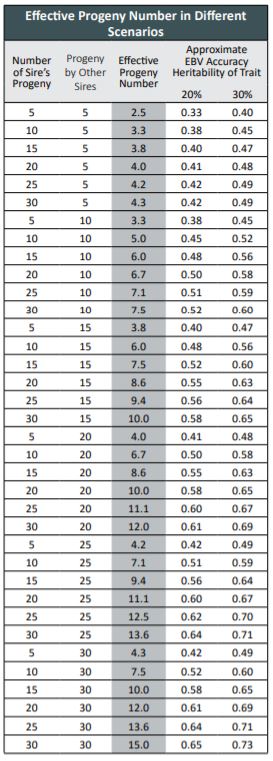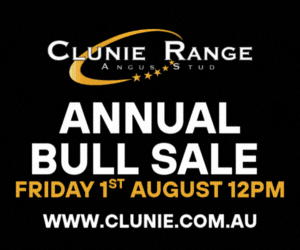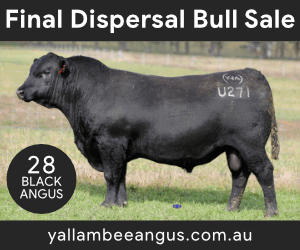Collecting Abattoir Carcase Information
Abattoir carcase information, along with live animal ultrasound scanning measurements, is used to calculate Carcase EBVs within the TransTasman Angus Cattle Evaluation (TACE).
Why collect abattoir carcase information?
Traits such as carcase yield and meat quality are some of the most economically important traits in the beef supply chain.
While the collection of carcase information from ultrasound scanning provides useful information on live animals, abattoir carcase information is of particular value for genetic evaluation as it represents a direct measure of the attributes of a beef carcase.
Obtaining direct abattoir carcase measurements can add considerable accuracy to the Carcase EBVs calculated within TACE, and consequently provides a valuable source of information when attempting to identify animals with superior carcase genetics for use in a beef breeding program.
How much effort is involved?
Members who are considering embarking on the collection of abattoir carcase information for TACE need to be aware that the collection of abattoir information can be challenging, expensive and time consuming.
The rewards however are significant and if useful abattoir information can be collected, the benefits can be considerable.
What abattoir carcase information will be accepted?
Abattoir carcase information must meet certain requirements in order to be accepted for inclusion
in TACE. These requirements have been put in place to ensure any abattoir carcase information that is analysed within TACE meets appropriate data integrity standards.
Specifically, abattoir carcase information will be only be accepted for inclusion in TACE if:
- It has been collected as part of a structured progeny test program
- Appropriate measurement collection protocol have been followed to ensure the carcase measurements that are collected are of suitable quality for genetic evaluation
- Animals are between 300 and 1000 days of age at slaughter (i.e. 10 – 33 months).
Abattoir carcase information that does not meet these criteria, such as kill sheets for small groups of steers or cull heifers, or information collected as part of a carcase competition, is not suitable for inclusion in TACE.
Carcase weight, rump fat, eye muscle area, MSA marble score and intramuscular fat measurements are currently utilised in the calculation of Carcase EBVs within TACE, however other measurements that have been collected can be submitted for storage on the Angus Australia database and possible future analysis.
It is essential that any abattoir carcase information collected for inclusion in TACE is from a structured progeny test program in order to ensure that the amount of useful information generated is maximised.
Number of effective progeny per sire
Ensuring that there are an adequate number of effective progeny by each sire is an important consideration when designing a progeny test program.
The number of effective progeny per sire (EPN) takes into account not only the number of progeny by each sire, but how useful the information collected on those progeny are for genetic evaluation.
The number of effective progeny for an individual sire can be calculated by considering the number of progeny within a contemporary group that are by the sire compared with the number of progeny in the contemporary group sired by other bulls.
A contemporary group can be considered to be animals of the same sex which are born within an individual herd in a 60 day period and are managed together as one mob under the same conditions until slaughter.
Specifically, the number of effective progeny for a sire can be calculated as follows:

For example, if a sire has 5 progeny in a contemporary group of 10 animals, then the effective progeny number would be 5 x (5/10) = 2.5 progeny.
The following table provides a guide to the impact on the effective progeny number as the number of progeny by a sire, and the number of progeny by other sires changes within a contemporary group.
Ideally sufficient females should be joined within the progeny test program to obtain a total effective progeny number of at least 10 – 15 per sire. This should give an EBV accuracy above 65-70% for a carcase trait with a heritability of 30%.

Genetic linkage (within Progeny Test)
In progeny tests where there are multiple contemporary groups (either within a single herd or across different herds), it is important to ensure that there are adequate genetic links between contemporary groups.
Genetic linkage enables the abattoir carcase measurements collected on animals in the different contemporary groups to be compared, while also enabling adjustment for differences in the genetic merit of the females to which the bulls are joined in each contemporary group.
If it is not possible for common sires to be represented in each different contemporary group, a minimum requirement would be to ensure that at least some of the bulls used have common sires, hence creating genetic linkage between contemporary groups through common grand-sires.
Genetic linkage (with the TACE Analysis)
If the bulls being progeny tested are largely of unknown genetics, it is important that reference sires are included in order to enable the abattoir carcase measurements to be linked to the carcase information that has been collected for other animals within the Angus breed.
The reference sires should ideally be “proven” bulls that have Carcase EBVs with at least 80% accuracy
Allocation of dams
It is important to carefully consider the dams to which the bulls will be joined in any progeny test program for the collection of abattoir carcase information.
Animal identification
It is important that all animals within the progeny test are clearly identified. This includes the dams to which the sires will be joined, plus all progeny.
Ideally, two forms of identification should be used to enable animals to be identified when tags are lost. For example, progeny may be tagged with a management tag at or shortly after birth, followed by a NLIS tag at marking.
Recording birth date information
It is important that appropriate details are recorded on all progeny at birth to enable the most effective analysis of the abattoir carcase information that is collected.
Maintenance of contemporary groups (on farm)
Where practical, all animals within a contemporary group (i.e. animals of the same sex which are born within an individual herd in a 60 day period) need to be managed together as one mob under the same conditions from birth until slaughter.
Splitting contemporary groups into different mobs will reduce the effectiveness of the abattoir carcase information that is collected. Likewise, “culling” any animals from the progeny test will potentially bias the abattoir carcase information.
Splitting contemporary groups (on farm)
If it necessary to split contemporary groups, either onfarm or as animals enter a feedlot for grain finishing, it is essential that a) the contemporary group is only split based on differences in weight; b) all animals within the contemporary group are weighed at the time the contemporary group is split; and c) these weights are analysed within TACE.
Splitting the contemporary based on other criteria, or based on a weight that is not analysed in TACE, will potentially bias the abattoir carcase information.
Maintenance of contemporary groups (at slaughter)
All animals within a contemporary group should be slaughtered on the same day and at the same abattoir.
Animals within a contemporary group should not be “harvested” and slaughtered on different days as different portions of the contemporary group meet market specifications. Harvesting animals as they meet market specifications will bias the Carcase EBVs that are calculated from the abattoir carcase information, with the
information not accurately reflecting the variation in performance within the contemporary group, while also influencing sire representation in each sub-group.
Splitting contemporary groups (at slaughter)
If it is necessary to split contemporary groups at slaughter, it is essential that a) all animals are slaughtered within 14 days; b) each sire is equally represented in each sub-group; and c) there is no difference in the average carcase performance of each sub-group.
For example, if a contemporary group needs to be slaughtered across two different days, then progeny by each sire should be randomly selected for each slaughter group, and the contemporary group should be evenly split to try and ensure the average carcase performance of animals in each sub-group is similar.
Recording management group information
It is important that any animals within a contemporary group whose performance may have been affected by different non-genetic factors are clearly identified by specifying a different management group (or kill group) for the animals when submitting the abattoir carcase information to TACE. For example, animals that may have been split into a different mob for management purposes, or animals that have been affected by injury or sickness. It is important to record a management group if animals have been affected by non-genetic factors at any time from birth up until slaughter. If animals are being finished in a feedlot, this includes details of any animals who may have been shy feeders, or who may have been removed from the group for health treatments.
Abattoir measurement collection protocols to ensure data integrity
When obtaining abattoir carcase information for inclusion in TACE, it is important to investigate how the carcases will be processed at the abattoir and how the carcase measurements will be collected to ensure that any information collected is useful for genetic evaluation. In reality this can be difficult when carcases are being processed through commercially operated abattoirs, however abattoir measurements that have not been collected in accordance with appropriate measurement collection protocols can lead to considerable bias in the Carcase EBVs that are calculated for animals within TACE.
Use of MSA accredited graders
Where possible, animals should be processed at a Meat Standards Australia (MSA) licensed abattoir and have measurements collected by an MSA accredited grader. A list of MSA licensed abattoirs is available from the Meat & Livestock Australia (MLA) website. It is important that the same MSA accredited grader collects carcase measurements on all animals within a contemporary group. Where carcase measurements are collected by different graders, a different management group (or kill group) should be specified for the carcases assessed by each grader.
Animal identification in the abattoir
Loss of individual animal and carcase identification is a common problem when collecting abattoir information for genetic evaluation. All animals will have a management tag and NLIS tag at slaughter, with abattoirs routinely recording NLIS tag and body number. It is important that all identification information is carefully cross referenced to ensure that the abattoir measurements collected are appropriately assigned to the correct animals.
Processing of carcases
Several carcase processing procedures routinely practiced in commercial abattoirs can lead to a reduction in the usefulness of any abattoir carcase measurements for genetic evaluation.
- Hide puller damage – Fat can inadvertently be stripped from the carcase when the hide is being removed and can considerably bias the rump and rib fat measurements subsequently collected on the carcase. Fat measurements should not be submitted to TACE from carcases where considerable hide puller damage has occurred.
- Trimming – Fat will routinely be trimmed from carcases using a whizzer knife prior to carcase measurements being collected, especially from the rib fat measurement site. Rib fat measurements should not be submitted to TACE from carcases that have been trimmed.
- Carcase damage / Bruising – Carcases that may have considerable damage, bruising or abscesses can have portions removed during processing.
Any measurements from these carcases should be carefully scrutinised and only submitted to TACE if the processing of the carcase has not biased the measurements collected.
- Quarter site – Carcases may be quartered at different sites. It is important that all carcases from animals in a contemporary group are quartered at the same site, and ideally at the 12/13th rib site. Where carcases have been quartered at a different site, a different management group (or kill group) should be specified. Spencer rolling – Some abattoirs undertake a practice known as “spencer rolling” to improve the shape of the cube roll. By design, spencer rolling distorts the eye muscle and subsequently biases any eye muscle area (EMA) and rib fat measurements that are collected. EMA and rib fat measurements should not be submitted to TACE from carcases that have been subject to spencer rolling.
- Electrical stimulation – All carcases from animals within a contemporary group should be subject to the same electrical stimulation process. This is particularly important when meat samples will be collected for analysis of meat tenderness.
- Chiller differences – Differences in chiller conditions (e.g. temperature), or differences in the length of time between slaughter and the collection of measurements in the chiller can have an influence on the carcase measurement values that are collected. A separate management group should be recorded to clearly identify any carcases from within a contemporary group that are stored in different chillers, or to identify any carcases for which there has been a significant difference in the length of time before measurement.
Collection of Meat Science Laboratory results
In addition to carcase measurements collected in the abattoir, meat samples can be collected from carcases for further analysis in the meat science laboratory for traits such as intramuscular fat (IMF), meat tenderness and meat colour. Meat science laboratory measurements are expensive and are normally only collected in research trials, however members interested in obtaining meat science laboratory measurements should contact staff at Angus Australia to discuss what is involved.
Reviewing quality of measurements
Prior to submission to TACE, it is important that any abattoir carcase measurements are carefully scrutinised. Specifically, the measurements should be reviewed to ensure they fit within normal expected ranges, and that the variation between measurements is reviewed to ensure that measurements follow a normal expected distribution.
- Ideally the sires being progeny tested will be joined to dams of known carcase genetics (e.g. registered or previously registered females with Carcase EBVs).
- If dams of unknown carcase genetics are being joined (e.g. commercial females), it is important that dams are randomly allocated to each sire (i.e. no selective mating).
- Where females of several age classes are used, it is important to allocate females evenly across the age classes.
- Dams should ideally be straight bred Angus dams, but cows of another breed or crossbred cows can also be joined as part of a progeny test. It is however important that all cows joined are of the same breed (or similar cross).
- At a minimum, all dams should be individually identified (i.e. tagged), with the year of birth and breed composition of each dam recorded with Angus Australia to account for age of dam and breed effects.
- The birth date of all calves needs to be recorded as accurately as possible. TACE will make adjustments to the abattoir carcase measurements to account for any differences in age between animals.
- The dam of each calf needs to be recorded. TACE will make adjustments to the abattoir carcase measurements to account for differences in the age and breed of the dam.
- If any calves have been bred by embryo transfer (ET), details regarding the recipient dam needs to be recorded. TACE will make adjustments to the abattoir carcase .
- The birth number of each calf needs to be recorded. That is, whether the calf is a single or twin calf. TACE will not directly compare the abattoir carcase measurements of single and twin calves together, and in general, twin calves should be removed from the progeny test.
Click here to print
Angus Australia acknowledges the funds provided by the Australian Government through the Meat & Livestock Australia Donor Company (MDC).
This resource was created as a result of a collaboration between Angus Australia and Meat & Livestock Australia Donor Company (MDC) (Project P.PSH.1063).






